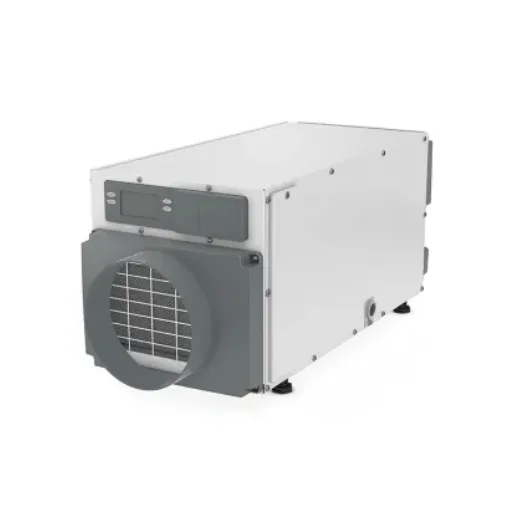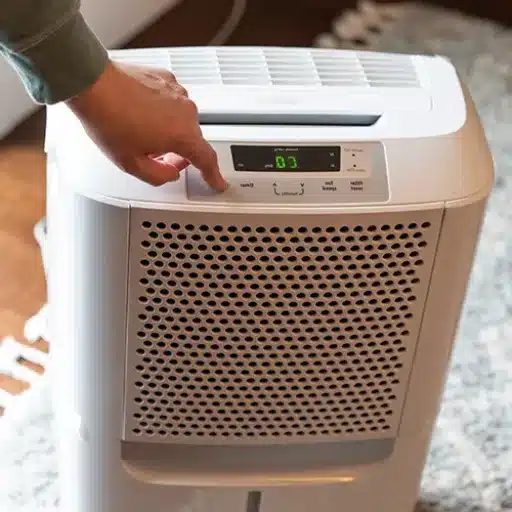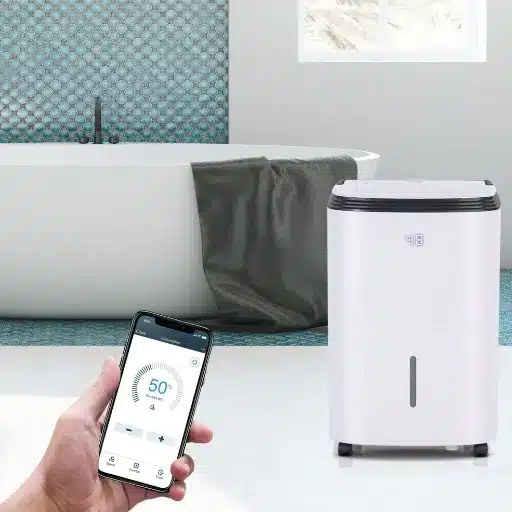Maintaining a clean and healthy bathroom environment can be a challenge, especially when excess moisture is a constant concern. Bathrooms are naturally prone to high humidity levels, making them the perfect breeding ground for mold, mildew, and unpleasant odors. But fear not—there’s a simple and effective solution to combat these issues! This guide is here to help you discover the best small bathroom dehumidifier to keep your space dry, fresh, and free from harmful moisture. Whether you’re tired of fogged mirrors, damp towels, or the musty smell that never seems to go away, we’ll explore how the right dehumidifier can transform your bathroom into a comfortable and healthy haven. Stay tuned as we break down the key features, benefits, and top options to help you make an informed choice!
How Does a Bathroom Dehumidifier Work?

A bathroom dehumidifier works by drawing in moist air, removing the excess humidity, and releasing dry air back into the room. It uses a fan to pull air through its system, where the moisture is either condensed onto a coil or absorbed by a desiccant material. The collected water is stored in a tank or drained out through a connected hose. By reducing humidity, it helps prevent mold, mildew, and odors, creating a healthier and more comfortable bathroom environment.
Understanding the Basics of a Dehumidifier for Bathroom
A dehumidifier is an invaluable tool for maintaining optimal indoor air quality in the bathroom, where excess moisture often causes a range of issues. Bathrooms are particularly prone to dampness, with activities like hot showers and baths generating significant humidity. According to studies on indoor air environments, maintaining relative humidity levels between 30-50% not only minimizes the risk of mold and mildew growth but also improves overall air quality.
Modern dehumidifiers come equipped with advanced features such as digital humidity control, auto-shutoff systems, and energy-efficient operation, making them user-friendly and cost-effective. For instance, a compact bathroom dehumidifier with a capacity of around 15-20 pints per day is ideal for small spaces, effectively eliminating moisture without consuming excessive power. Furthermore, many models are designed to operate quietly, ensuring they do not disrupt your bathroom’s tranquility.
Additionally, using a dehumidifier extends the lifespan of your bathroom fixtures by reducing the chances of moisture-related damage, such as paint peeling, rust, or warped wood. By incorporating one into your bathroom setup, you’re investing in both comfort and the long-term durability of your home.
How Does a Small Dehumidifier Remove Moisture from the Air?
A small dehumidifier removes moisture from the air through a systematic process designed to regulate humidity levels efficiently. It typically utilizes either refrigerant or desiccant technology to achieve this. Refrigerant models operate by drawing in humid air through a fan and passing it over cold coils, where the moisture condenses into water droplets that are collected in a reservoir or drained via a hose. On the other hand, desiccant dehumidifiers employ a moisture-absorbing material, such as silica gel, which traps water vapor as air passes through.
Modern small dehumidifiers are equipped with advanced features to optimize performance. For instance, many models have sensors to monitor room humidity levels accurately and automatically adjust their operation to maintain a comfortable atmosphere, usually between 30% to 50% relative humidity, the ideal range recommended by experts. Some devices also include energy-efficient compressors or eco-modes that reduce power consumption, with many compact units using as little as 20-40 watts per hour.
When placed in a bathroom, a small dehumidifier can effectively control moisture levels caused by daily activities like showers, which can produce up to 2.5 pints of water vapor. For reference, an efficient small dehumidifier can remove approximately 16 to 20 ounces of water daily, depending on the model and environmental conditions. These devices not only combat mold and mildew but also improve air quality, making your bathroom a healthier and more comfortable space.
The Role of a Water Tank in Moisture Removal
The tank of water is extremely important for dehumidifiers since it retains the moisture taken from the air. The latest small dehumidifiers have a tank with a hold of anything between 12 and upto 50 ounces, depending on the type. For example, a compact model that has a 16 ounce tank is capable of dealing with small areas such as bathrooms and closets and does not need frequent emptying. Many other advanced models include full tank indicators and auto shut off features for overflow prevention, therefore improving convenience.
As for the size and design of the tank, other aspects also define how effective the device can work. Smaller tanks require lightweight maintenance, and allow for more portable designs, whereas larger tanks are more suitable for longer duration services in bigger areas. Some even allow manual emptying of the tank without needing to physically unscrew a hose. This allows the added tank to regulate moisture more effectively and aids the Dehumidifier in preventing the growth of Mold due to optimla humidity and invasive moisture levels.
What Are the Benefits of Using a Small Bathroom Dehumidifier?
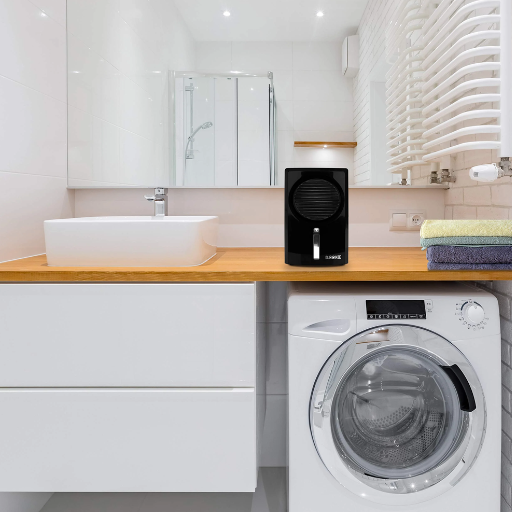
Using a small bathroom dehumidifier offers several practical benefits. It helps reduce excess moisture in the air, preventing the growth of mold and mildew, which can be harmful to both health and bathroom surfaces. By maintaining an optimal humidity level, it also minimizes condensation on mirrors, walls, and fixtures, ensuring a cleaner and more comfortable environment. Additionally, a compact dehumidifier is space-efficient and easy to install, making it ideal for bathrooms with limited room. These features work together to enhance air quality and protect your bathroom from moisture-related damage.
Improving Air Quality in Your Bathroom
Proper ventilation plays a crucial role in maintaining excellent air quality in your bathroom. Without sufficient airflow, moisture can accumulate, leading to the growth of mold, mildew, and harmful bacteria. Installing an efficient exhaust fan is one of the most reliable ways to improve ventilation. Modern exhaust fans are designed to remove excess moisture and odors quickly, reducing humidity levels and preventing condensation on surfaces. According to recent studies, running a ventilation fan for at least 20–30 minutes after a shower reduces humidity by approximately 60%, significantly curbing the risk of mold growth.
For a more advanced solution, consider a ventilation system with built-in humidity sensors. These systems automatically activate when humidity levels rise above a certain threshold, ensuring continuous air circulation even if you forget to turn on the fan. Combining these technologies with natural airflow, such as opening a window when weather permits, further enhances air quality, providing a fresh and pleasant atmosphere in your bathroom.
Preventing Mold and Mildew Growth
To effectively prevent mold and mildew growth, it’s essential to address the underlying factors that encourage their development. Mold thrives in damp, humid, and poorly ventilated environments—making bathrooms a common problem area. According to experts, keeping indoor humidity levels below 60% can significantly curb mold growth. A dehumidifier or a properly sized bathroom exhaust fan can help achieve this, as ventilation ensures excess moisture is quickly expelled from the air.
Additionally, regular cleaning routines can play a major role in minimizing mold risks. Using a mixture of water and vinegar to clean tiles, grout, and other surfaces has been shown to reduce mold spores effectively. Studies indicate that vinegar can kill 82% of mold species, including black mold, making it a natural and cost-effective cleaning solution.
Another preventative measure is ensuring that all leaks are fixed promptly. Even small, unnoticed drips from pipes or fixtures can lead to accumulated moisture, creating ideal conditions for mold. Combining this with water-resistant materials such as mildew-resistant paint and waterproof caulk on walls and fixtures can further protect your bathroom from potential infestations.
Finally, maintaining natural light in the bathroom can deter mold growth. UV rays from sunlight are a natural disinfectant, helping inhibit the spread of spores on surfaces. By implementing these strategies consistently, you can ensure a healthier, mold-free bathroom environment.
Reducing Dampness and Enhancing Comfort
Controlling dampness in a home, particularly in bathrooms, is critical for ensuring comfort and preventing long-term damage. Excess humidity can lead to condensation on surfaces, fostering conditions for mold growth and reducing overall air quality. One effective strategy to mitigate dampness is the use of mechanical ventilation systems, such as exhaust fans, which can remove excess moisture from the air. Studies show that a well-installed exhaust fan can reduce humidity levels by up to 50%.
A dehumidifier is another practical option, particularly in highly humid climates. Modern dehumidifiers are capable of extracting up to 25 to 50 pints of moisture daily, depending on room size and conditions. Additionally, sealing leaks or gaps in windows, pipes, and fixtures can prevent the intrusion of external moisture.
For enhanced comfort, incorporating moisture-wicking materials like bamboo or microfiber for towels, bath mats, and shower curtains can help keep surfaces dry. Furthermore, maintaining a steady indoor temperature of around 68°F to 72°F can improve comfort while reducing condensation. These measures, when executed collectively, contribute significantly to a dry, comfortable, and healthier living space.
How to Choose the Best Small Dehumidifier for Your Bathroom?
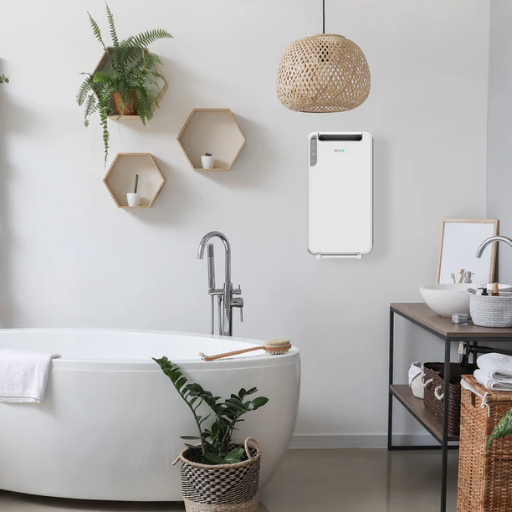
To pick the right small dehumidifier for your bathroom, consider these primary features:
Size and Capacity: Look for specific small spaces dehumidifiers designed for 20-30 pint capture a day. This is perfect for humid bathrooms.
Energy Efficiency: Performance can be optimized with reduced electricity costs on energy-efficient devices. So, choose ones with Energy Star ratings.
Tank or Drainage Options: Choose a unit with the right tank size to eliminate the need to constantly empty the tank or opt for units with continuous drainage.
Noise Level: Dehumidifiers generate sound. That aside bathrooms are close to sleeping places so opt for sub 50 decibel devices.
Additional Features: These additives such as automatic shut-off, humidity control, and washable air filters reduce fuss on cleaning the appliance.
Key Features of a Mini Dehumidifier to Look For
- Compact Size and Portability:
Mini dehumidifiers are designed to fit into small spaces such as bathrooms, closets, or even RVs. Look for models that are lightweight and easy to move, typically weighing around 1-3 pounds and measuring less than 10 inches in any dimension.
- Water Tank Capacity:
While compact, a reliable mini dehumidifier should offer a reasonable water tank capacity. Most models feature tanks with capacities ranging from 16 to 30 ounces, ensuring efficient moisture collection without frequent emptying.
- Moisture Extraction Rate:
Check for the unit’s ability to extract moisture efficiently. Many mini dehumidifiers can remove between 8 to 16 ounces of water per day, depending on the room’s humidity level and temperature.
- Energy Efficiency:
Mini dehumidifiers often use thermoelectric (Peltier) technology, which is energy-efficient and consumes as little as 20-40 watts per hour. This ensures minimal energy usage while still delivering effective results.
- Noise Level:
Since these devices are frequently used in small or quiet spaces, noise level is an important factor. Many models operate at less than 40 decibels, comparable to a soft hum, making them suitable for bedrooms and offices.
- Automatic Shut-Off Feature:
To prevent water overflow and ensure safety, look for mini dehumidifiers equipped with an automatic shut-off function. Most models are designed to stop operation when the tank is full and provide an indicator light to signal the need to empty it.
- Built-In Air Purification:
Some advanced mini dehumidifiers come with an integrated air purification system, utilizing filters to capture dust, pollen, and other allergens, thus improving overall air quality.
- Coverage Area:
Depending on the space you need to dehumidify, check the device’s coverage area. Mini dehumidifiers commonly handle spaces between 100 to 300 square feet, making them ideal for bathrooms, small bedrooms, or storage spaces.
- Design and Aesthetics:
A visually pleasing design can be important, especially if the dehumidifier will be placed in visible areas. Many brands offer sleek and modern styles that blend seamlessly with home interiors.
- Ease of Maintenance:
Look for models with easily washable filters and detachable water tanks to simplify cleaning and maintenance, ensuring long-term functionality without hassle.
By keeping these key features in mind, you can select a mini dehumidifier that perfectly suits your needs while delivering effective and reliable moisture control.
Understanding Humidity Levels and Humidity Control
| Aspect | Details |
|---|---|
|
Ideal Humidity Range |
30% to 50% indoors |
|
Low Humidity Effects |
Dry skin, respiratory issues, cracked wood |
|
High Humidity Effects |
Mold growth, pest attraction, structural damage |
|
Winter Humidity Levels |
Lower RH (30%-40%) to prevent condensation |
|
Summer Humidity Levels |
Use dehumidifiers, aim for <60% RH |
|
Humidity Control Tools |
Humidifiers, dehumidifiers, HVAC systems |
|
Health Benefits |
Prevents respiratory issues, skin irritation |
|
Home Protection |
Protects wood, electronics, and furniture |
|
Energy Efficiency |
Proper insulation reduces condensation |
Why an Energy Star Rated Dehumidifier is Ideal
Choosing an Energy Star-rated dehumidifier ensures you are investing in a product that is both energy-efficient and environmentally friendly. These units are specifically designed to consume less energy while maintaining outstanding performance, saving you money on electricity bills. According to the U.S. Environmental Protection Agency (EPA), Energy Star-certified dehumidifiers use approximately 15% less energy compared to standard models, which can equate to saving hundreds of kilowatt-hours annually.
Apart from energy savings, these dehumidifiers also contribute to reducing greenhouse gas emissions, aligning with efforts to combat climate change. Additionally, Energy Star-rated dehumidifiers often include advanced technologies, such as smarter humidity sensors and improved air filters, providing precise moisture control and better air quality. This combination of cost-effectiveness and sustainability makes them a smart choice for any home or office setting where humidity regulation is crucial.
Is a Portable Dehumidifier Suitable for Small Rooms?
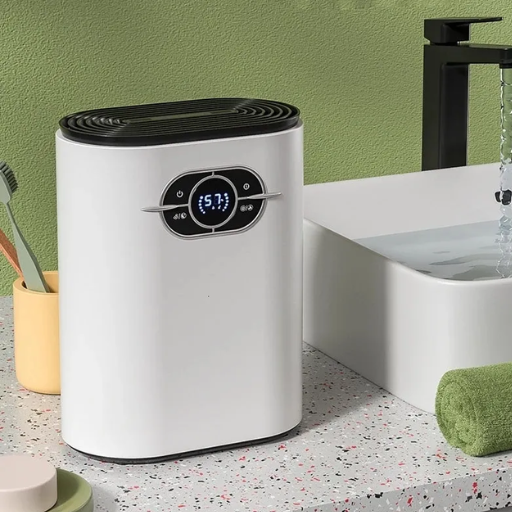
Yes, a portable dehumidifier is suitable for small rooms. These units are specifically designed to efficiently remove excess moisture from smaller spaces, helping to prevent issues like mold, mildew, and damp odors. When choosing a dehumidifier for a small room, ensure that the capacity matches the room size—look for models rated for smaller spaces to optimize performance. Portable dehumidifiers are lightweight, easy to move, and can be conveniently placed where they are most needed, making them an effective and practical solution for small room humidity control.
The Advantages of a Compact Dehumidifier
Compact dehumidifiers are invaluable tools for improving air quality and creating a comfortable living environment in smaller spaces. Here are some of the key advantages:
- Efficient Moisture Control
Compact dehumidifiers are specifically engineered to extract excess moisture from the air, reducing humidity levels in small rooms. For instance, many models are capable of removing up to 20-30 pints of moisture per day, ensuring dry and healthy living conditions.
- Improved Air Quality
By lowering humidity, these devices inhibit the growth of mold, mildew, and dust mites, which can trigger allergies and respiratory issues. Studies have shown that maintaining humidity levels below 50% significantly reduces the presence of these allergens, making compact dehumidifiers a great choice for allergy sufferers.
- Energy-Efficient Design
Compact dehumidifiers are often designed to be energy-efficient, using less electricity compared to larger models. Many devices come with an Energy Star certification, which means they meet strict energy-saving standards, potentially reducing energy costs by up to 20%.
- Portable and Versatile
Lightweight and compact, these dehumidifiers can be easily moved from one room to another. Their portability makes them ideal for addressing humidity issues in spaces such as bathrooms, closets, basements, or dorm rooms. Most units weigh under 20 pounds, allowing for hassle-free mobility.
- User-Friendly Features
Modern compact dehumidifiers are equipped with a variety of convenient features, such as adjustable humidity settings, automatic shut-off mechanisms, and quiet operation. Additionally, many devices include easy-to-clean filters and removable water tanks, simplifying maintenance.
- Cost-Effective Solution
Compact models are typically more affordable upfront compared to full-sized units, with prices ranging between $50 to $150, depending on the brand and features. Their energy efficiency also ensures lower operational costs over time.
Overall, compact dehumidifiers offer a practical, economical, and efficient way to tackle humidity challenges in smaller spaces, enhancing comfort and promoting a healthier indoor environment.
Using a Drain Hose for Continuous Moisture Removal
Using a drain hose for continuous moisture removal is straightforward and convenient. I simply attach the hose to the designated outlet on the dehumidifier, ensuring it’s securely connected and directed toward a nearby drain or sink. This setup allows the unit to operate continuously without the need to empty the reservoir manually, saving me time and effort. It’s an efficient solution, especially for managing humidity in areas with persistent moisture.
How a Portable Dehumidifier Improves Ventilation?
A portable dehumidifier significantly enhances indoor ventilation by maintaining optimal humidity levels, which can prevent stale air and promote better air circulation. High humidity often leads to damp conditions where mold, mildew, and other allergens thrive, ultimately compromising air quality. By consistently removing excess moisture from the air, a portable dehumidifier creates a healthier environment, reducing the presence of such irritants and making breathing easier for individuals with sensitivities or respiratory issues.
Recent advancements in technology have made modern dehumidifiers more efficient, with some models capable of extracting up to 50 pints of water per day in spaces of up to 4,500 square feet. This performance ensures comprehensive humidity control in larger rooms, basements, or areas prone to poor ventilation. Additionally, many devices now incorporate energy-efficient designs certified by ENERGY STAR®, reducing power consumption while still delivering robust functionality.
Better ventilation also complements cooling systems, such as air conditioners. Drier air feels cooler and more comfortable, allowing HVAC systems to work more effectively without overburdening energy usage. This synergy not only supports improved air circulation but also contributes to lower utility costs. By operating quietly and offering features such as adjustable humidistats and continuous drainage options, portable dehumidifiers serve as a versatile tool for maintaining breathable, well-ventilated spaces across homes, offices, and more.
What Are the Maintenance Tips for a Dehumidifier for Home?

- Clean the Filter Regularly
Check and clean the filter at least once a month to ensure the dehumidifier functions effectively. A dirty filter can block airflow and reduce efficiency.
- Empty the Water Tank Frequently
Empty and clean the water tank daily or as needed to prevent overflow or bacterial growth. Some models have an indicator to notify when the tank is full.
- Inspect and Clean the Coils
Periodically check the coils for dust or debris, and clean them gently using a soft brush or cloth to maintain optimal performance.
- Ensure Proper Placement
Place the dehumidifier in a well-ventilated area, away from walls or obstructions, to allow adequate air circulation.
- Store Correctly When Not in Use
If you’re not using the dehumidifier for an extended period, ensure it is thoroughly cleaned and stored in a dry, cool space to prevent damage.
By following these straightforward tips, you can maximize the lifespan and efficiency of your dehumidifier.
Regular Cleaning of the Water Tank
Proper care of your dehumidifier’s water tank is essential to prevent the buildup of mold, bacteria, and unpleasant odors. Begin by emptying the water tank daily if the dehumidifier is in frequent use. This reduces the risk of stagnant water, which can become a breeding ground for harmful microorganisms.
For a thorough cleaning, remove the tank and wash it with warm water and mild soap at least once a week. You can also disinfect the tank by using a mixture of one part white vinegar to two parts water, which helps eliminate mold spores and mineral deposits. Be sure to rinse the tank thoroughly to avoid leaving any soap or vinegar residues that could impact the unit’s performance.
According to research, dehumidifier water tanks can harbor bacteria if left uncleaned for extended periods, which can decrease air quality and compromise device efficiency. Regular maintenance not only ensures clean, healthy air but also extends the life of the appliance. Dry the tank completely before reinserting it to prevent residual moisture from contributing to microbial growth. By adhering to these cleaning practices, you can maintain optimal performance and safeguard indoor air quality.
Checking and Replacing the Filter for Optimal Performance
The filter is a critical component of any air appliance, designed to trap dust, allergens, and other airborne particles to ensure cleaner indoor air. Over time, filters can become clogged or saturated, significantly reducing the efficiency of the device and potentially spreading contaminants back into the environment. To maintain peak performance, it is recommended to inspect the filter regularly, typically every one to three months depending on usage and manufacturer guidelines.
HEPA filters, commonly used in air purifiers, for example, can capture particles as small as 0.3 microns with a 99.97% efficiency, making them highly effective for improving air quality. However, such efficiency declines if the filter is not replaced on time. Indicators that a filter may need replacing include reduced airflow, unusual odors from the appliance, and visible buildup on the filter surface.
For reusable filters, cleaning protocols may vary. Some filters can be gently rinsed under water, although care should be taken to dry them completely before reinserting. Disposable filters, on the other hand, should be replaced with manufacturer-approved replacements to ensure compatibility and effectiveness. Regular filter maintenance not only enhances air quality but also reduces strain on the appliance’s motor, potentially extending its lifespan.
When to Use the Auto Shut-Off Feature
The auto shut-off feature is a critical tool for enhancing both safety and energy efficiency in various household and industrial devices. This functionality is particularly beneficial in situations where devices are left unattended. For example, appliances like air purifiers, humidifiers, or space heaters equipped with auto shut-off features reduce the risk of overheating or fire hazards by automatically turning off after a set duration of inactivity. Data shows that appliances with this feature can lower energy consumption by up to 20%, contributing to cost savings and environmental sustainability.
This feature is also indispensable in devices such as coffee makers or irons, where prolonged operation could pose safety risks. Many modern appliances include customizable time settings for auto shut-off, allowing users to align functionality with their schedules. For instance, leaving a device on overnight without supervision is no longer a concern with this smart feature. Leveraging auto shut-off not only strengthens operational safety but also adds convenience to daily routines by requiring less manual monitoring.
Reference Sources
-
Experimental investigation of moisture levels and drying time in bathrooms
This study explores moisture levels and drying processes in bathroom environments. Link to source -
Solving mould and condensation problems: A dehumidifier trial in a suburban house in Britain
This article examines the effectiveness of dehumidifiers in managing condensation and mold in residential settings. Link to source -
CFD-based Performance Evaluation of Smart Bathroom Systems with Space Heating, Direct Drying, and Dehumidification
This research evaluates smart bathroom systems, including dehumidification functions. Link to source -
Assessment of the performance of the Showerdome™ device
This report assesses humidity control in bathrooms using the Showerdome™ device. Link to source -
Portable dehumidifiers for the control of condensation in housing
This paper evaluates the performance of portable dehumidifiers in reducing condensation and mold risks. Link to source
Frequently Asked Questions (FAQs)
Q: What is the best dehumidifier for a small bathroom?
A: The best dehumidifier for a small bathroom depends on your specific needs, but popular options include the Eva-Dry and Pro Breeze models, which are compact and efficient for reducing moisture in small spaces.
Q: How does a small dehumidifier with a drain hose work in a bathroom?
A: A small dehumidifier with a drain hose allows continuous drainage of collected water, which is ideal for high humidity areas like bathrooms. It eliminates the need to manually empty the water tank, making it convenient for ongoing use.
Q: Can a dehumidifier for basement be used in a bathroom?
A: Yes, a dehumidifier designed for a basement can be used in a bathroom, particularly if it’s a small model. However, you should ensure it fits well in your bathroom and has features like a continuous drain option if needed.
Q: What features should I look for in an electric dehumidifier for my bathroom?
A: Look for features such as auto defrost, a humidistat for humidity control, a continuous drain option, and energy-saving capabilities to efficiently manage humidity in your bathroom.
Q: How often should I empty the water tank when using a small dehumidifier for bathroom?
A: The frequency of emptying the water tank depends on the humidity level and the capacity of the dehumidifier. For high humidity areas, you may need to empty it daily unless you use a model with a continuous drain feature.
Q: Is a 50-pint dehumidifier too large for a bathroom?
A: A 50-pint dehumidifier is generally too large for a typical bathroom and better suited for larger spaces like basements. For bathrooms, a smaller model is recommended to efficiently dehumidify without taking up too much space.
Q: How can a dehumidifier help reduce mold in my bathroom?
A: By reducing moisture levels, a dehumidifier helps prevent the growth of mold and mildew, which thrive in humid conditions. Consistently maintaining a lower humidity with a small dehumidifier can significantly reduce mold risk.
Q: What is the benefit of using a dehumidifier with a built-in pump in a bathroom?
A: A dehumidifier with a built-in pump can automatically pump water out, which is useful for continuous operation without needing to manually empty the water tank, especially in high humidity areas like bathrooms.
Q: How do I find the best small dehumidifier for my bathroom?
A: To find the best small dehumidifier for your bathroom, consider factors like the square footage, moisture levels, and desired features such as a continuous drain option and auto defrost. Reading reviews and comparing models like Eva-Dry and Pro Breeze can also help.
Q: Can an air dehumidifier improve air quality in small spaces like bathrooms?
A: Yes, an air dehumidifier can improve air quality by reducing excess moisture, which can prevent mold and mildew growth, thus reducing allergens and enhancing the overall air quality in small spaces like bathrooms.

